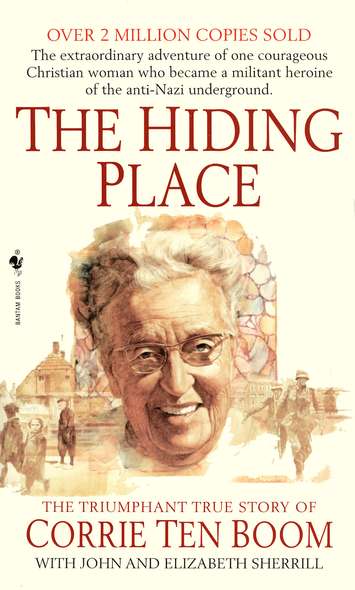
One of the first books I read about World War II was The Hiding Place, Dutch Christian Corrie ten Boom’s account of her family’s involvement in the Dutch Resistance movement and their subsequent arrest by the Nazis for aid given to Jewish individuals. I discovered the story sometime in my high school years. Corrie’s riveting account was one of the first believer’s autobiographies I read shortly after becoming coming a Christian in 1973, in the spring of my thirteenth year. The story captured both my heart and my imagination and provided me a concrete example of a life lived for Christ.
Corrie grew up in Haarlem, a city near the Dutch capital of Amsterdam. The youngest of four children, Corrie and her siblings, brother Willem and sisters Betsie and Nollie, lived a pleasant life with their parents. Her father, Casper, was a respected watchmaker and jeweler who carefully taught his craft to Corrie. She would become a licensed watchmaker in 1922, the first woman in Holland so recognized.
Named for her mother Cornelia, Cornelia “Corrie” Arnolda Johanna ten Boom saw a model of Christian charity and love in action in both her parents. Long before the ten Booms began secreting Jews away in their hiding place (a secret room within their house) and helping them get to freedom, they had a long history of helping orphans and underprivileged families. Once World War II began, the attention of this committed Christian family turned to aid Jewish individuals trying to outrun the Nazis.
Germany invaded the Netherlands on May 10, 1940. Nazi officials raided the ten Boom home on February 28, 1944, after a local Nazi sympathizer reported the family’s resistance activities. Ten family members were arrested and taken first to a prison in Scheveningen, Netherlands. The six people hiding in their home—four Jews and two members of the resistance—were never discovered and made their way to safety and freedom.
After a few weeks, only three ten Boom family members remained incarcerated—Corrie’s father Casper, her sister Betsie, and Corrie. Casper died while imprisoned. Officials transferred Betsie and Corrie to the infamous Ravensbrück women’s concentration camp, where Corrie lost her beloved sister on December 16, 1944. Miraculously, Corrie was released from the center on December 28, 1944, just one month and a few days before the Russians invaded the Schindler family farm in Radach, Germany.
The ten Booms, it is believed, helped save some 800 Jews. Corrie was recognized as one of the “Righteous Among the Nations” by the Yad Vashem Remembrance Authority on December 12, 1967. Headquartered in Jerusalem, Israel, Yad Vashem is the World Holocaust Remembrance Center.
The life experiences of Mildred Schindler Janzen are shared in her memoir, Surviving Hitler, Evading Stalin: One Woman’s Remarkable Escape from Nazi Germany. Though different in many ways, these women’s stories have striking similarities. Corrie was fifty-one years old when arrested by Nazi officials; Mildred was fifteen when the Red Army turned her world upside down. Both would celebrate a birthday alone soon after these events transpired. The same sweet spirit of the Lord present in Corrie is the same that I’ve witnessed in Mildred, “a gentle and quiet spirit” about which the author of 1 Peter writes. How easy it would have been for both these ladies to develop hardening of the heart, a condition to which both could have readily fallen prey. Both trusted their lives to the Creator of the universe. Both learned to walk with Him, living each day secure in the belief that God was indeed in charge of the circumstances of their lives.
The lives of both these incredible ladies have been a testimony to God’s deliverance. A favorite quote of Corrie’s exemplifies the way both Mildred and she have approached difficult situations, which could have easily overwhelmed them both, “When a train goes through a tunnel and it gets dark, you don’t throw away the ticket and jump off. You sit still and trust the engineer.”
Two years after her release from Ravensbrück, Corrie began a speaking ministry that would take her all across the world to share the story of God’s deliverance and lead to the writing of other books, including Tramp for the Lord, In My Father’s House, and A Prisoner and Yet.
If you haven’t read this moving true-life account written by Corrie ten Boom, one of the true heroes of the faith, I highly recommend The Hiding Place. You won’t be disappointed!
what I remember from “The Hiding Place” was the story of she was in a setting that she was sure to be killed by natives (I think.) Later she asked them why they did not kill her. They responded that she was surrounded and protected. Corrine had not seen her hedge of protection, but they had. Powerful.
LikeLike